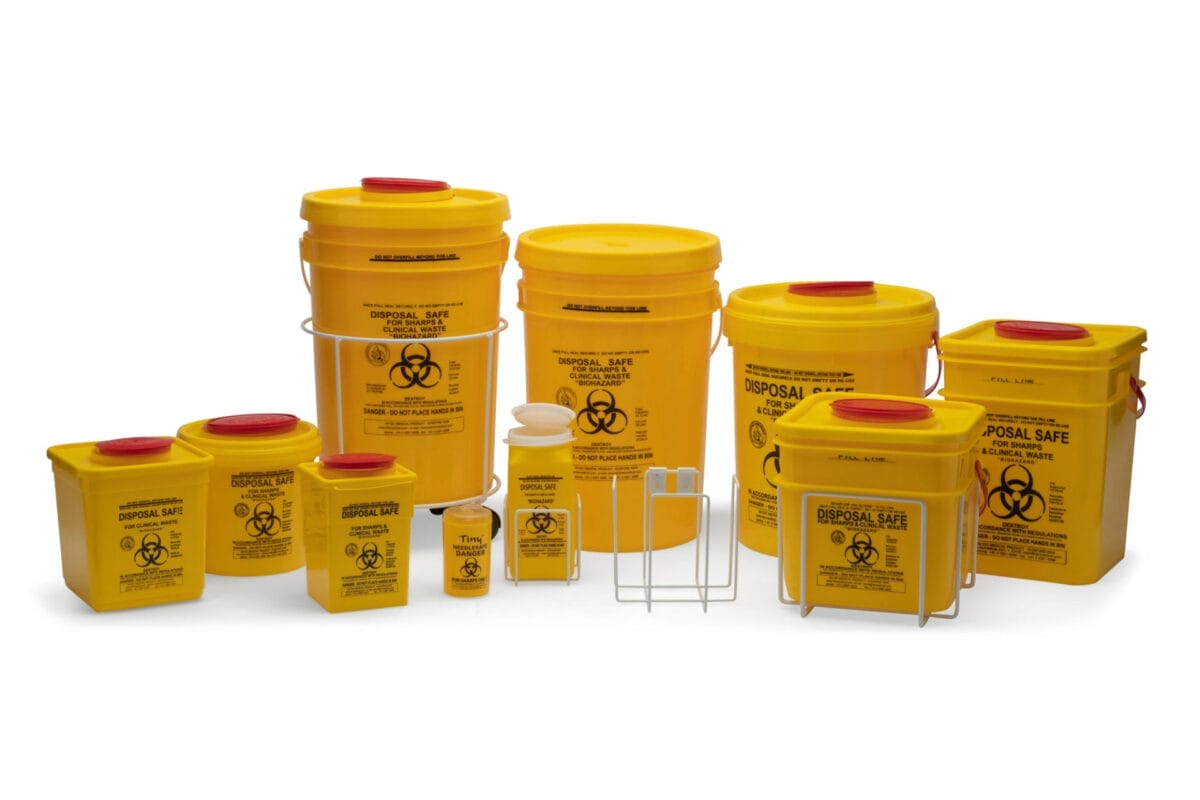Introduction
In the realms of healthcare, laboratory science, and various fields requiring the manipulation of sharp instruments, the proper disposal of sharps is not merely a procedural step but a paramount safety measure. Sharps, defined as any device or object used to puncture or cut skin, embody a broad spectrum of items including needles, scalpels, broken glass, and more. Given the potential for injury and the transmission of infectious diseases, the selection, placement, and maintenance of sharps disposal containers are subjects of critical importance. This article delves into these aspects, aiming to guide professionals in making informed decisions that ensure workplace safety and comply with Australian health regulations.
Selection of Sharps Disposal Containers
The selection of appropriate sharps disposal containers is the first line of defence against sharps-related injuries. Such containers are specifically designed to safely contain and ultimately dispose of sharps, minimizing the risk of exposure to bloodborne pathogens. Australian Standards for Safety and Quality in Health Care provide stringent guidelines for what constitutes an acceptable sharps disposal container. These standards emphasize puncture resistance, leak-proofing, and the use of universally recognized biohazard symbols.
When selecting a sharps disposal container, it is essential to consider the type of sharps waste generated. For instance, larger containers may be required in settings where bulky items like large-bore needles or pipettes are used. Conversely, smaller, more portable containers might suffice in areas with lower volumes of sharps waste or where space is at a premium.
Furthermore, the design of the container must ensure user safety. This includes a one-way, tamper-proof opening that prevents hand access, thereby reducing the risk of accidental needle-stick injuries. The container’s fill line should be clearly visible, indicating when it is due for replacement to avoid overfilling, which can lead to spillage and increased risk of exposure.
Placement of Sharps Disposal Containers
Strategic placement of sharps disposal containers is crucial to their effective use. Containers should be easily accessible to those who require them, yet positioned away from public access to mitigate misuse or tampering. The Australian and New Zealand Standard for the Management of Clinical and Related Wastes outlines that containers must be installed at a height that is accessible to all users, including those who may be seated or have disabilities.
In high-use areas, such as operating rooms or laboratories, multiple containers might be necessary to ensure that sharps can be disposed of immediately after use, further reducing the risk of accidental injuries. Conversely, in lower-use areas, a single, centrally located container may suffice. Regular assessments should be conducted to ascertain if the current placement meets the needs of the facility and complies with health and safety regulations.
Maintenance of Sharps Disposal Containers
Maintenance of sharps disposal containers is integral to their effectiveness and safety. This includes routine inspections to ensure they are not overfilled, damaged, or tampered with. Overfilled containers pose a significant risk as they can lead to accidental sharps exposures. Thus, containers should be replaced in accordance with the manufacturer’s recommendations or when they reach three-quarters full, whichever comes first.
The process of replacing and disposing of full sharps containers must be handled with care. Containers should be sealed according to the manufacturer’s instructions to prevent spillage. The disposal of these containers must comply with local regulations concerning biomedical waste, which may require incineration or other forms of treatment to render the waste non-hazardous.
Training and education of staff are indispensable components of maintenance. Employees must be informed about the correct use of sharps disposal containers, including how to safely dispose of sharps, the importance of not overfilling containers, and what to do in the event of a sharps injury. Regular training ensures that all staff members are aware of procedures and policies, thereby fostering a safe working environment.
Conclusion
The selection, placement, and maintenance of sharps disposal containers are essential practices in safeguarding health and safety in environments where sharps are used. By adhering to Australian health and safety standards, facilities can minimize the risk of sharps-related injuries and the transmission of infectious diseases. It is incumbent upon all stakeholders to ensure that these practices are implemented effectively, reflecting a commitment to the highest standards of workplace safety and public health. Through diligent attention to the selection of appropriate containers, strategic placement, and rigorous maintenance protocols, the risks associated with sharps can be significantly mitigated, thereby protecting the well-being of both the workforce and the wider community.
If you would like to know more or would like our assistance in the areas mentioned check us out at www.intrinsicsafety.com.au. Alternately, call us on 1300 990 336 or email us at [email protected]



